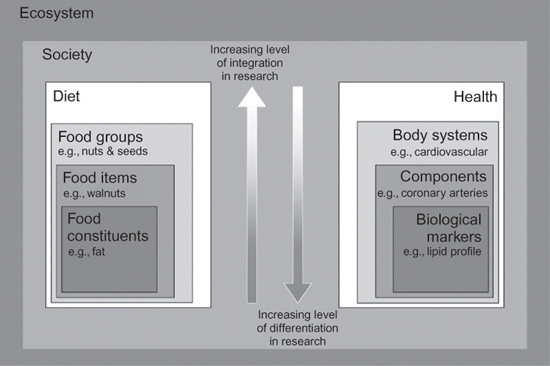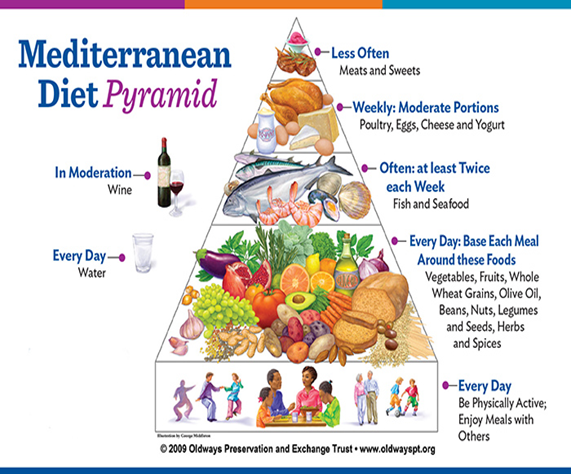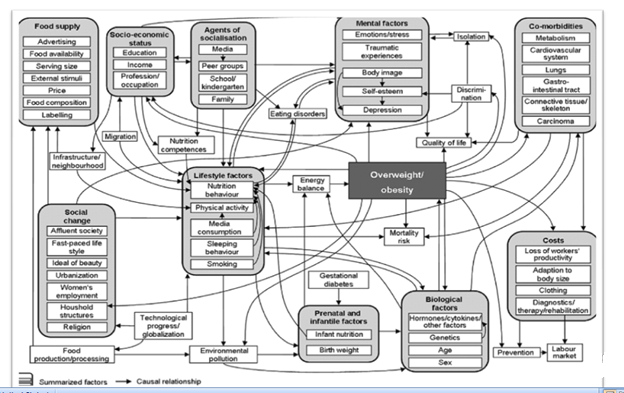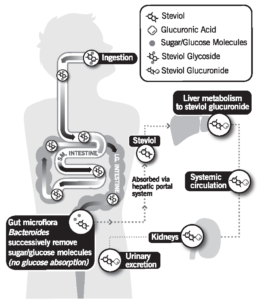Advances in
eISSN: 2378-3168


Review Article Volume 11 Issue 2
Food Proses Department, Manisa Celal Bayar University,Turkey
Correspondence: Necla Çağlarırmak, Food Proses Department, Manisa Celal Bayar University, Saruhanlı College, Saruhanlı-Manisa,Turkey
Received: April 01, 2021 | Published: April 12, 2021
Citation: Caglarirmak N.An aspect of nutrition and main food sweeteners in the diet. Adv Obes Weight Manag Control. 2021;11(2):60-66. DOI: 10.15406/aowmc.2021.11.00336
Food additives are factors in both health reason and food production. Sweeteners are utilized in large scale because of biochemistry, production, obesity, food structure, economy, functional property, and research and development efforts of food industry. Intake of high calorie nutrients such as sugar in the nutrition are important factors against increasing trends of obesity, cardiovascular disease and diabetes and some of chronic diseases. In healthy nutrition, the sufficient calorie intake must be recommended for basal metabolism and usual daily activities due to individual and environment conditions. Sweeteners are also food additives and using commonly for low calorie nutrition or from other reasons such as bulk of foods. natural sweeteners can be suggested such as stevia, together with balanced and low calorie diet including vegetables, and other food types due to diet originality that change in different societies, economies, regions and education levels of people. Traditional nutrition such as Mediterranean diet can be recommended for balanced diet. This topic was reviewed under light of literature.
Keywords: biochemistry, foods, JEFCA, sweeteners, obesity, nutrition, food formulas, side effects, health
SSBs, sugar-sweetened beverages; Ace-K, acesulfame potassium; ADI, adequate dietary intake
Nutrition is an essential for surviving. In modern century, high calorie intake, diabetes mellitus, obesity and similar metabolic disorder high level of fat, carbohydrates are increasing day by day due to kinds of factors such as, fast foods, lack of exercise life because of vehicles, some of habits, following internet, watching TV, development of high caloric foods, even stressful life styles and often food intakes, rejection of traditional food intakes and preference of high calorie fast foods. There are effective factors that organize and change food and drink habits following reasons; intake of normal calorie diets due to health conditions and increasing of obesity and diabetes mellitus, harmful effects of some sugar products. Sweeteners are used for their intense sweet taste for substituted for sugar. Consumption of Sugar-sweetened beverages (SSBs) has increased markedly. In recent years tracking positively with growing burdens of obesity and T2Dtype 2 diabetes.
There are two main nutrition terms.1
In the sufficient diet, anybody can take sufficient or even high calorie foods which contain high level of fat, and carbohydrates with NO EXERCISE that can cause to kinds of metabolic diseases including obesity.
On the other hand, in balanced and sufficient diet, essential food nutrients e.g. essential minerals, vitamins, and protein other essential nutrients should be taken to body.
There are sorts of nutrition habits and styles including traditional nutrition. Economy, education, traditions, ecology, level of development of countries can affect to nutrition of people in the World. Nobody does not forget almost one billion people in border of starvation or suffering the famine against obesity.2 There are lots of factors affected nutrition including economies and development strategies in the World. In developing countries, morbidity and mortality are related to protein and energy malnutrition because of insufficient and malnutrition.2
Nutrition and economics with other factors
Economy should be one of the most important factor in nutrition style for food preference of people. There are effective matters for nutrition (Figure 1).
Figure 1 summarizes the tree point continuum economies. Foods contain both macro and micro nutrients together with functional components that can be increase cost and consumptions of sorts of foods. Functional foods have beneficial effects to human health though they can prevent diseases, can cause to important cost on health care budgets.3
Nutrition types and health
When you examined literature, indicated that the factors food groups, food items and food constituents and health impacts are related to each other’s. Nutrition evaluated in a large perspectives. It is well known that Mediterranean nutrition may contain balanced and sufficient diet because of consumption of well vegetable, fruits olive oil and fish less amount of carbohydrates. The environment factors include ecology, climate, Geography and tradition for nutrition habits. A typical example is Mediterranean type nutrition or Far East nutrition habits (Figure 2).4

Figure 2 System levels of human nutrition exemplified by diet and health. Modified according to Hoffmann 2003.4
When you applied Mediterranean diet pyramid including exercise, physically active with enjoy meals with others you provide healthy life conditions including law calorie intakes. Turkey places in also Mediterranean region and she has traditional Mediterranean traditional foods. Mediterranean diet and Black sea region diets that including vegetable, olive oil and fish are common especially in the sea sides of our country. Turkish traditional nutrition can be superior or preferred against fast foods with law calorie cooking type and reduced salt and sweet type foods and drinks by supporting other positive factors (Figure 3).5–7

Figure 3 Mediterranean diet.6
How can we supply low calorie intake from foods?
The answer is not simple and easy to be able explain this question. There are various factors that affect consumption of foods. The basic answer should be taken of high amount of vegetable, fruits, and the cooked dishes that contain less amount of fat, and sugar and carbohydrates. Reasons of obesity and overweight should be examined in a large scale like below Figure 4. In the Figure 4, Such a lots of parameters stimulate and cause to overweight and obesity e.g. food supply, social economic status, agent socialcation, mental factors, co-morbidities, social changes, life style factors, prenatal and infantile factors, biological factors and costs. It is seen that there complex and long ways, cross passes are exists among all of the mentioned factors.8

Figure 4 Multitude and interrelatedness of components exemplified by causes and effects of overweight/obesity.8
Main food sweeteners in nutrition
In food industry sugar can be added to foods such as formulated cereals, canned meals, milk and dairy products, cakes, snacks, wines, beverages, fruit juice. Addition high amount of sugar causing worldwide problems creates health problems like obesity and the other diseases.9 The main sweeteners are Saccharin, Aspartame, Acesulfame potassium (Ace-K), Sucralose, Neotame, Advantame, Steviol glycosides Luo Han Guo fruit extracts.10 The most of themwere obtained in manufacturing plants conditions from artificially but some of them originated from natural sources such as Steviol glycosides which are natural constituents of the leaves of Stevia rebaudiana (Bertoni) Bertoni, a plant. They are parts of South America and commonly known as Stevia (Figure 5).
There are activities for their biochemical and health effects. They are in food additives and their ADI established by Joint FAO/WHO Expert Committee on Food Additives (JECFA).11 They are another group of sweeteners; sorbitol, xylitol, lactitol, mannitol, erythritol, and maltitol. The sweetness of sugar alcohols varies from 25% to 100% as sweet as sugar. Preference sugar with low-calorie sweeteners is a main principle for facilitating weight control and also overwhelming the some of chronic diseases; heart disease, diabetes, several types of cancer, hypertension, arthritis, and other musculoske, letal problems that cause high quantity ın take of carbohydrates especially sweet food products.12,13 It was estimated that rise to 2.3 billion overweight and 700 million obese adults (WHO, 2011).14
Properties of sweeteners
Law calorie diets are preferred various reasons; losing weight, preventing chronic diseases, preventing over weighty and obesity bulk of industrial foods etc. Sweeteners are taken because of providing especially law calorie in diet. U.S. Food and Drug Administration has approved kinds of sweeteners; aspartame, acesulfame-k, neotame, cyclamate and alitame for consumption as per acceptable daily intake (ADI) value (Figure 6).15

Figure 6 Metabolism of stevia.19
Properties of sweeteners were explained as below:
Saccharin
Saccharin is chemically known as osulfabenzamide (2, 3-dihydro-3-oxobenzisosulfonazole). It is resistance to temperatures and pH and used infood and beverage table-top sweeteners, desserts, yoghurt, ice-cream, baked goods, jam, preserves marmalade, soft drinks, sweets, mustard.16 This is non-caloric sweetener is 200 to 700 times sweeter than sugar The Adequate Dietary Intake (ADI) for saccharin is set at 5 mg/kg body weight per day.
Aspartame is the methyl ester of the two amino acids, aspartic acid and phenylalanine.
Aspartame is 200 times sweeter than sucrose According to the FDA, the acceptable daily intake of aspartame for humans is 50 mg/kg body weight.Aspartame is metabolized to phenylalanine, aspartic acid and methanol in the GI tract. People with the genetic disorder, phenylketonuria, must exercise caution because they cannot break down phenylalanine to tyrosine, and therefore must avoid aspartame. Health problems are associated with consumption of aspartame including, Alzheimer’s disease, attention-deficit disorders, birth defects, cancer, diabetes, Gulf War syndrome, and lupus.10 Neotame is used recently sweetener which is considered as the potentialsuccessor of aspartame. It is a derivative ofaspartame.16
Acesulfame-K
The ADI for acesulfame-K is 15 mg/kg body weight.
It is usually combined with aspartame or sucralose to provide a synergistic sweetening effect. Such combinations not only provide a “more sugar-like taste” but also decrease the total amount of sweetener used. Artificial Sweeteners have not synergistic genotoxic effects when acesulfame-K was used in combination with aspartame in mice.
Sucralose
Sucralose is a highly intense sweetener that is 600 times sweeter than table sugar. It was found that sucralose is most similar to table sugar sucrose. Some potential adverse health effects of sucralose reported in the literature too. Scientists have suggested an association between the use of non-sugar sweeteners and health outcomes such as body weight, diabetes, cancer, and oral health.
Sugar alcohols
Sugar alcohols are saccharide derivatives produced by replacing an aldehyde group with a hydroxyl group. The sugar alcoholsare sorbitol, mannitol, xylitol, erythritol, isomalt, and hydrogenated starch hydrolysates. Sugar alcohols may affect blood sugar levels, although less than of sucrose. Sugar alcohols also are classified as hydrogenated monosaccharides; those are the most commonly known as sorbitol, mannitol, and xylitol; hydrogenated disaccharides such as isomalt, maltitol, and lactitol; and as mixtures of hydrogenated mono-di- and/or oligosaccharides such as hydrogenated starch hydrolysates.17
Sugar alcohols are used as bulk sweeteners in reduced calorie foods as well as sweeteners. They are present in fruits such as pears, melons, and grapes as well as mushrooms and fermentation foods (wine, soy sauce and cheese.18–20
Stevia
Food safety and health benefits of food additives are significant concern with protecting and preventing even developing and contributing the health. Stevia is a natural originated sweetener and also has functional properties such as antioxidant and anti-inflammatory effects that can provide to reduce cardiovascular damage and metabolic disorders (Figure 7).13

Figure 7 Timeline for regulatory milestones related to stevia.10
All 40 plus steviol glycosides have US GRAS (Generally Recognized as Safe) status, have been approved by Health Canada, Food Standards Australia New Zealand (FSANZ), and most recently by the Joint Expert Committee on Food Additives (JECFA). European Food Safety Authority (EFSA)21 is evaluating the approval of all 40 plus, they currently specify the use of 11 steviol glycosides in high purity stevia leaf extracts.22 Stevia has not negative side effects have been reported stevia was approved for use as a sweetener by the Joint Food and Agriculture organization/World Organization Expert Committee on Food Additives (JEFCA).
Regular consumption of artificially sweetened beverages has been associated with many risk factors for metabolic syndrome, including abdominal obesity, insulin resistance, and / or impaired glucose tolerance.
Aspartam can have similar or same harmful effect to health. The main common adverse effects of artificial sweeteners.23
However, in some studies, no incision results were obtained. It can be said that weightcontrol requires more than just calorie reduction – moderation, along with eating a balanced diet and regular exercise, is exact way toprovide an optimal weight. low-calorie sweeteners (LCS) have some of unexpected effects to curing obesity and losingweight and explained as follows:LCS affects negatively the learned control of energy intake (sweet taste confusion hypothesis); large amount of them lead to s increase consumption food sweet foods for sweetness (sweet tooth hypothesis.24 Artificialsweeteners can create negative effects together with some of situations in the life and health conditions such as pregnant and lactating women, diabetics, migraine, and epilepsy patients, and children. Children are specific and importantgroups because of higher consumptionfood and beverage intake per kilogram of their body weight.25–27 In the literature there were kinds of reports about intake and consumption of sweeteners. High intensity, low-energy sweeteners (LES) lots of studies cannot indicate any causal links between use of LES and appetite for sweetness.28
Their consumption has been shown to cause mild to serious side effects ranging from nuisance headaches, to potentially life-threatening cancer.29 Recent reports of sweeteners suggest they are not efficacious in weight loss and may promote weight gain. When examined literature, sweeteners must be consumed in ADI level.
The natural sweeteners should be preferred to consume in the diet. Artificial sweeteners should be limited in diet because of almost all of them have side and harmful effects of human and animals. Sweeteners are also food additives and using commonly for low calorie nutrition or from other reasons such as bulk of foods. natural sweetenerscan be suggested such as stevia, together with balanced and low calorie diet including vegetables, and other food types due to diet originality that change in different societies, economies, regions and education levels of people. One of common and healthy traditional nutrition;Mediterranean Diet can be recommended for balanced diet. Calorie intake of people depends on various factors; age, physical activity, special health reasons, environment, life style etc. The natural and balanced nutrition with functional compounds and less calorie diet is essential for lifelong together with exercise and clean environment.
None.
Author declare that there is no conflict of interest.
None.

©2021 Caglarirmak. This is an open access article distributed under the terms of the, which permits unrestricted use, distribution, and build upon your work non-commercially.